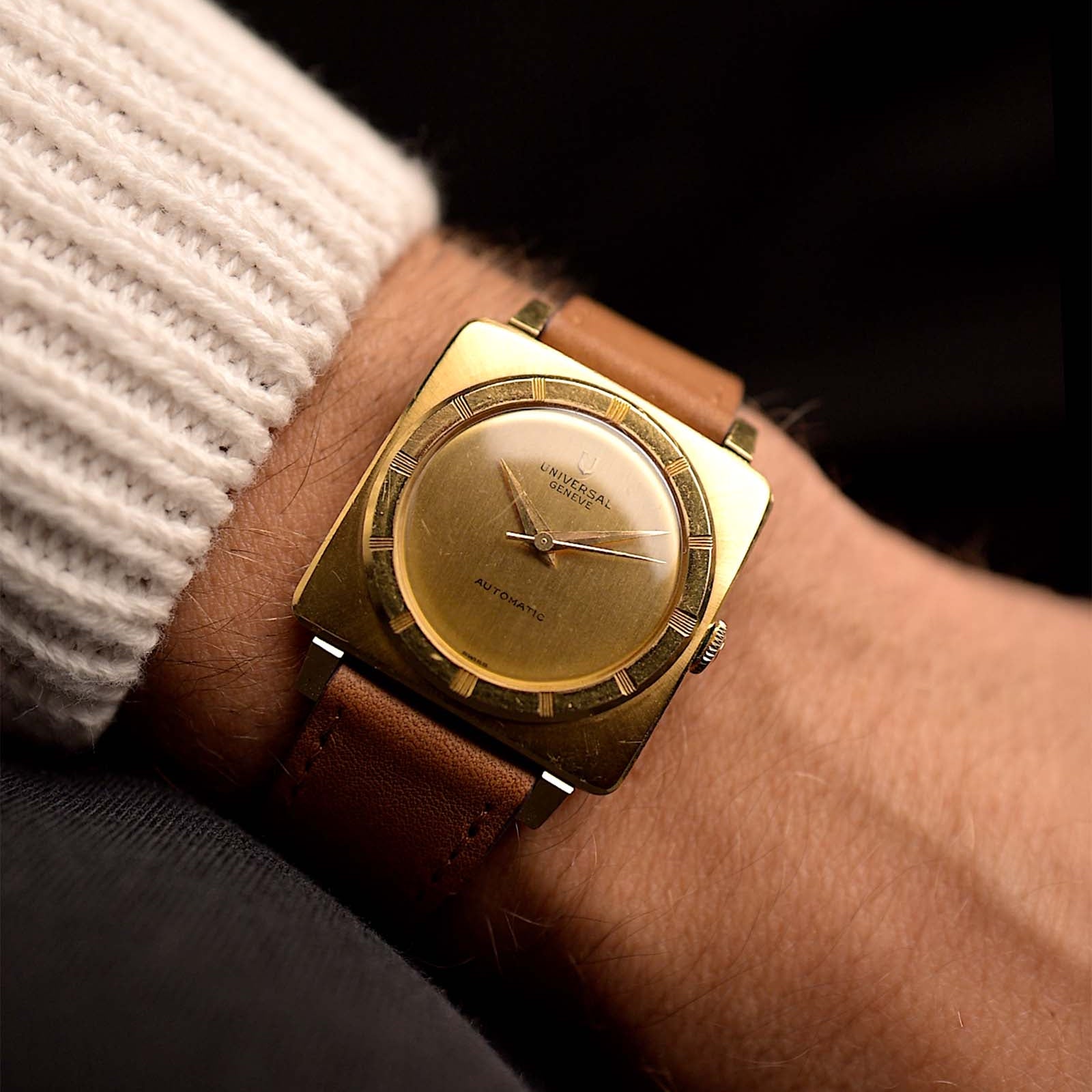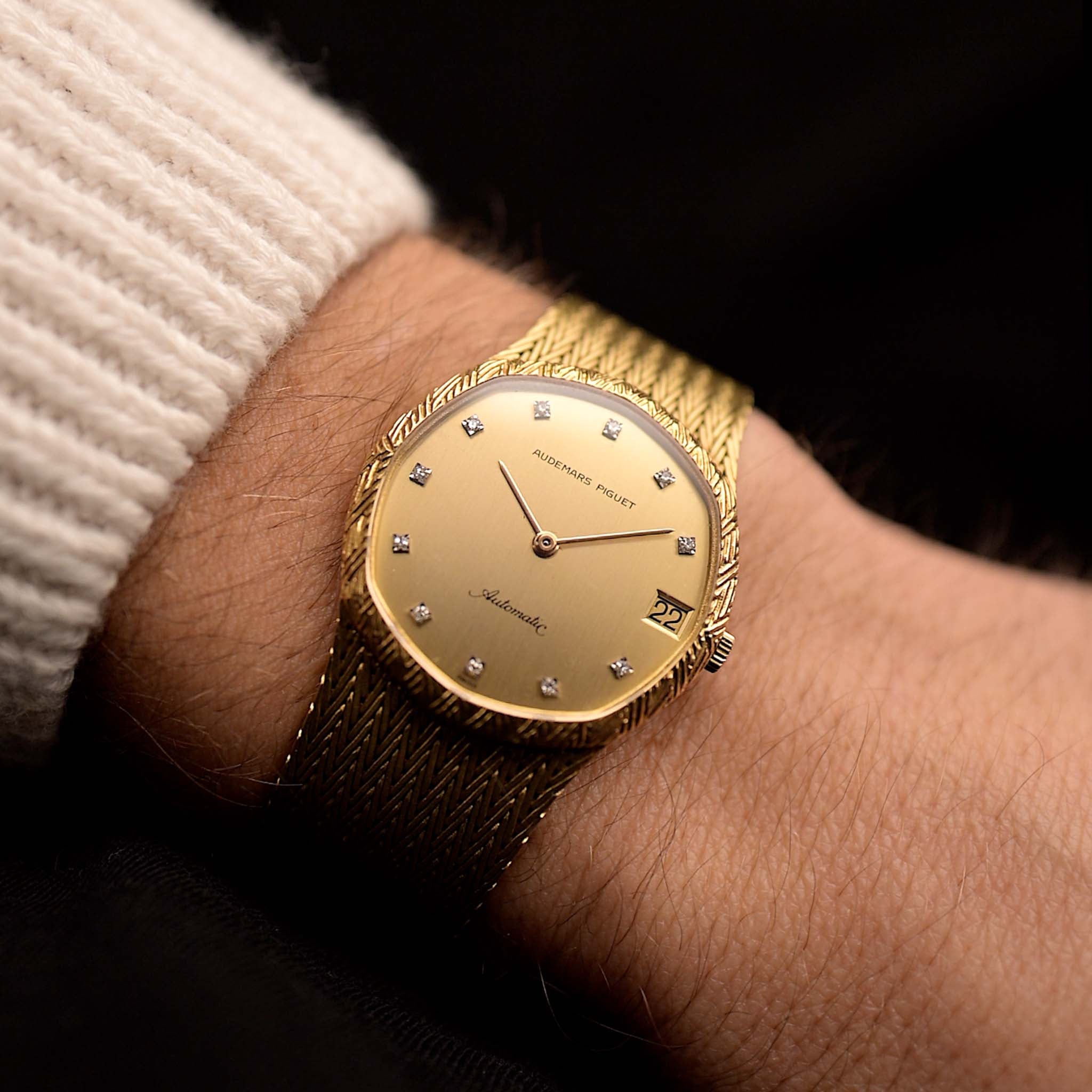The fine decorations on watch movements are just for aesthetics, right? Well, that's not how it all started! Looking through the Centuries we can see that most artisanal techniques we can still find in modern watch movements originate from necessity and were only secondarily visually pleasing. Join me on this journey of form, function and everything in between.
July 03, 2024
Why Even Bother? - Watch Finishing Techniques Beyond Aesthetics

Marcus Siems @siemswatches
Collector, Author, Data Analyst
Did you know that finishing a watch movement effectively doubles the numbers of operations during the assembly[1]? It is an extremely time-consuming step. On the high-end of the fine (independent) watchmaking spectrum the hand-finishing of the movement can take over 100 working hours per watch[2]! Even more "commercial" brands like Patek Philippe and Audemars Piguet still invest (on average) between 10-50h of finishing per watch[2]*.
So why...? What's it about finishing techniques that seem to "define" the best of the best. Why is an arbitrary aesthetic factor skyrocketing prices of mechanical watches? Well, most probably because these are not completely arbitrary techniques applied to the material. Originally all of these delicate techniques are rooted in functional requirements. But I'm getting ahead of myself. Let's try and bring a little order into the what, how and why of watch finishing with this guide.
 The inner workings of a Patek Philippe ref. 3788 with perpetually wound caliber 28-255 and various finishing techniques. Photo Goldammer.
The inner workings of a Patek Philippe ref. 3788 with perpetually wound caliber 28-255 and various finishing techniques. Photo Goldammer.
Anglage
Procedure & Appearance. Anglage describes the downward angle at the edge of larger movement components. With exactly 45 degrees these angles are called chamfers and otherwise bevels. At the upper end of execution you can find this technique with rounded angles and peaking in the so-called inward angles - two bevels/chamfers meeting at an acute angle.
Technical Properties. Anglage on the main plates and bridges can prevent material stress concentrations along its edges[3].
 Anglage in vintage (left, 1950s IWC cal. 89) and modern high-end (right, Romain Gauthier) watchmaking. Photos Courtesy of Goldammer & Romain Gauthier.
Anglage in vintage (left, 1950s IWC cal. 89) and modern high-end (right, Romain Gauthier) watchmaking. Photos Courtesy of Goldammer & Romain Gauthier.
Steel Coloring (Blueing)
Procedure & Appearance. When steel is consistently treated with heat (tempered) it'll change colors. Depending on the temperature you can see the material turning from yellow over purple to blue - staying that way. You will often find this technique on watch hands and screws in the movement.
Technical Properties. Bluing and tempering is supposed to prevent corrosion[1] and increase toughness of the material.
 The most common heat treatments (tempering) change the color of steel components to a dark blue shade. Depending on the temperature it'll change its appearance between yellow, blue and green hues. Temperatures depicted in degrees Celsius. Photo Courtesy of Goldammer & Nifty Alloy.
The most common heat treatments (tempering) change the color of steel components to a dark blue shade. Depending on the temperature it'll change its appearance between yellow, blue and green hues. Temperatures depicted in degrees Celsius. Photo Courtesy of Goldammer & Nifty Alloy.
Côtes de Genève (Geneva Stripes)
Procedure & Appearance. Geneva stripes are generated by scratching in a wave-like pattern (rectifying method). Each brush is set in parallel quarter-circles that arrange into the stripes on the macro scale... a wonderful visual illusion. Snailing of gears is another related (even though more simplistic) technique (also [here]).
Technical Properties. Textures like the Geneva Stripes help entrapping dust and oil. As these small particles are kept away from moving parts these won't clog up as quickly[3]. However, striping is not applied to functional components as the scratching is removing too much material in a non-uniform way, which might negatively affect accuracy[4].
 You can see the fine Côtes de Genève (Geneva Stripes) on an IWC caliber 83. You will see this technique with mostly broader stripes - as the narrower they get, the more intricate and time consuming to make they are. On the right you can see the edging tool (rectifying rule) used to make the stripes. Photos Courtesy of Goldammer & Monochrome Watches.
You can see the fine Côtes de Genève (Geneva Stripes) on an IWC caliber 83. You will see this technique with mostly broader stripes - as the narrower they get, the more intricate and time consuming to make they are. On the right you can see the edging tool (rectifying rule) used to make the stripes. Photos Courtesy of Goldammer & Monochrome Watches.
Perlage
Procedure & Appearance. It is a circular graining technique here accomplished by rotating (for example) sandpaper lowered onto metallic surfaces in a regular fashion. It is a very common technique as you can find it on almost all caseback insides and on base plates. However, the size of each circle defines the quality and aspiration of the perlage - the smaller the better.
Technical Properties. Perlage is in many respects very similar to the Côtes de Genève: The texture was supposed to extract small amount of oil and dust away from moving parts[3-4].
 The perlage is one of the most often encountered finishing techniques as it typically graces the inside of the caseback and further the surface of the main plate. Photo Goldammer & Monochrome Watches.
The perlage is one of the most often encountered finishing techniques as it typically graces the inside of the caseback and further the surface of the main plate. Photo Goldammer & Monochrome Watches.
Mirror Polish (Black Polish)
Procedure & Appearance. It refers to the practice of polishing metal to the extent that its surface becomes reflective like a mirror. Removing even the smallest scratches often forms the illusion of completely white or even black surfaces when viewed from a particular angle - hence they are also referred to as black polish. To achieve this effect the final polishing has to be done by hand with wood and diamond paste[4]. Lore surrounding this technique suggest that a perfect result can only be achieved in dry weather and never during rain - however, if that is grounded in material science or superstition is still up for debate[5].
Technical Properties. Even extremely polished surfaces can be beneficial. Mirror polishing can relieve stress from the material and lower the friction between moving parts resulting in improved accuracy[3].
 Mirror (black) polishing effect on various parts of vintage watch movements from Patek Philippe, Vacheron Constantin and Audemars Piguet. Photos from Goldammer.
Mirror (black) polishing effect on various parts of vintage watch movements from Patek Philippe, Vacheron Constantin and Audemars Piguet. Photos from Goldammer.
Open-Working (Skeletonization)
Procedure & Appearance. Lastly, we got the open-working and skeletonization of a movement. It describes the "see-through" nature of certain parts to add depth to the perception of the movement and the entire watch. Hereby, it is distinguished whether the movement parts were already born hollow (skeletonization) or normal parts that were cut and saw into their hollow shape (open-working).
Technical Properties. Open-working a movement has arguably little to no positive effect on the functioning of a watch. However, the literature suggests that open-working pocket watch movements was used to decrease the amount of material used to be able to recycle the "leftovers".
 The Open-Worked Audemars Piguet Royal Oak ref. 25829 in tantale and platinum. Photo Courtesy of Phillips Geneva.
The Open-Worked Audemars Piguet Royal Oak ref. 25829 in tantale and platinum. Photo Courtesy of Phillips Geneva.
The Conclusion
As you can see all these decorations weren't invented and established for the sake of visual appeal but rather with functionality in mind. Still, functionality and aesthetics go hand in hand. The equally distributed shapes in perlage or the ornate Côtes de Genève are as visually pleasing as they are useful. Hand finished watch movement or thus in every aspect of the word artisanal!
However, the precision of modern production tools and advances in material sciences render almost all of these techniques obsolete! By modern standards finishing thus is an art only for arts sake.
 Overview over the main movement finishing techniques in watchmaking. Photos Courtesy of Goldammer, Monochrome Watches, & Phillips.
Overview over the main movement finishing techniques in watchmaking. Photos Courtesy of Goldammer, Monochrome Watches, & Phillips.
But isn't that what watches today are all about? Mechanical watches are anyway anachronistic - phones and smart-watches tell the time much more precisely, cheaper and battery power exceeds the power-reserve of (almost) every mechanical watch. There simply is no longer a pragmatic or functional reason to buy a mechanical watch[6].
Hence, we buy watches for their intricacy, their character and oftentimes because we value craftsmanship. And since sapphire casebacks started to become the norm the art of finishing was put to the foreground. And as precision dwells in the background, the value of a mechanical watch might indeed be strongly defined by the craftsmanship going into its production!
Of course there are major differences between finishing and finishing. As brilliantly pointed out in Brandon Moore's article[2] the same type of finishing can be achieved automatically through CNC machines or over long hours with steady hands. The quality will differ strongly. But we'll save this aspect for another time...
* That'll be a lot more on the high-complication end of the catalogue as well as for skeletonization but if you also factor in "standard" time-only watches that'll be your numbers. The "finishing hours" for PP & AP are only estimates based on the overall watchmakers hours.
I must take the time to thank Erik Gustafson (@HairspringWatches) and Max Braun (@mrbWatches) for their unique and invaluable groundwork that left its mark on me and pushed me over the edge of finally writing this guide. I do not consider myself an expert in finishing and the evaluation of its quality and shied away from writing this guide. Thus, without the insight- and delightful episode 21 of the Hairspring Podcast this write up probably wouldn't have happened for another couple of years. So treat yourselves and give it a listen.
References
[1] Watchmaking and the American System of Manufacturing; Richard Watkins (2009) [Link]
[2] Insight: Fine Watchmaking Market Map 2022; Brandon Moore, SJX Watches [Link]
[3] Materializing Time: Interpretations of the content-container relationship in watch design; Michele Pozzi (2023) [Link]
[4] A Brief Guide To Watch-Finishing; Laura McCreddie-Doak, Mr. Porter [Link]
[5] WTF is Finishing; Max Braun & Erik Gustafson, Hairspring Podcast [Link]
[6] Art, industry and marketing: ingredients for the revival of Swiss watchmaking; Francois H. Courvoisier (2020) [Link]
All rights on text and graphics reserved to the Author.




























Leave a comment